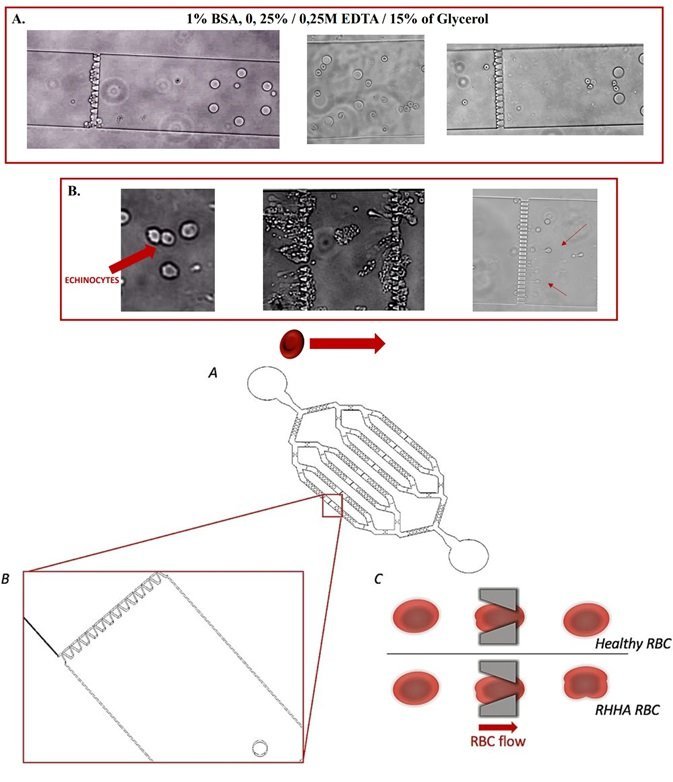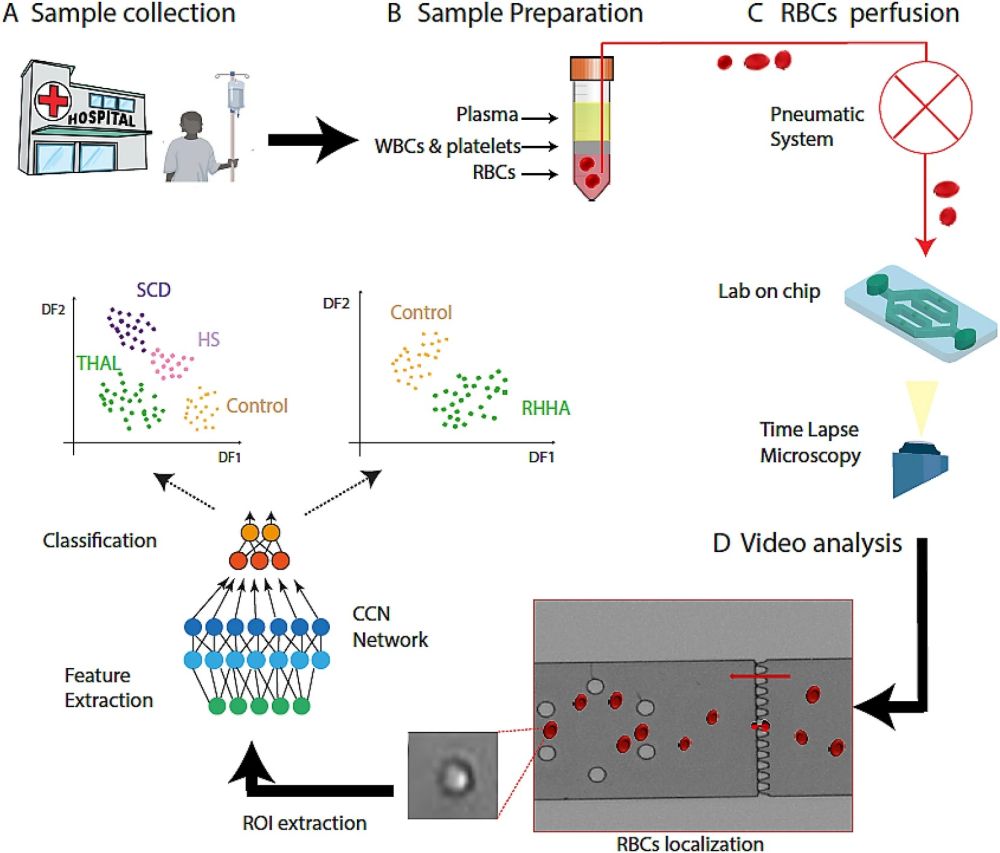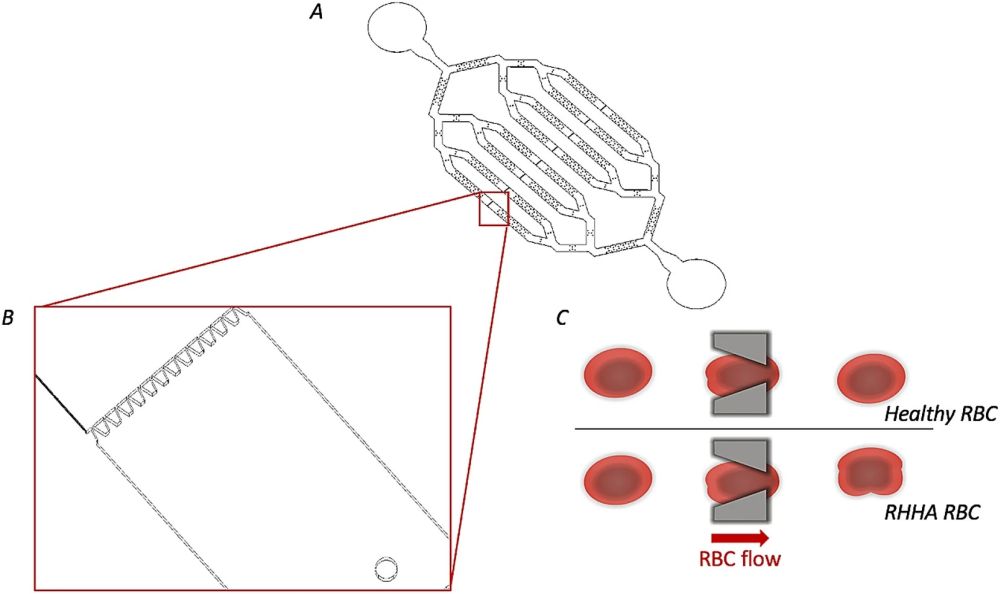
02 Jul Microfluidic meets deep learning for RBC classification in rare hereditary hemolytic anemia
Red blood cell (RBC) disorders affect these oxygen-carrying cells and can cause severe damage to the body. Rare hereditary hemolytic anemia (RHHA) is one of these disorders and is associated with the premature removal of defective cells from the spleen. A novel microfluidic advancement can shed light on the characteristics of the cells affected by RHHA. In a recently published paper in Scientific Reports, a research team focused on combining machine learning with microfluidic technology to develop a microfluidic device for RBC classification in rare hereditary hemolytic anemia.
“We present a methodology that combines the use of a microfluidic unit with machine learning data analysis from video recorded images for evaluating the premature lack of plasticity of RBCs in patients with RHHA, through an objective and reliable platform, a better characterization of RBCs in RHHA through machine learning algorithms will enable the stratification of patients based on severity and/or response to treatment. Thus, facilitating personalized medicine and development of new treatment strategies.”, the authors explained.

Reproduced under Creative Commons Attribution 4.0 International License. Rizzuto et al., Sci. Rep., 2021.
Spleen takes advantage of a filtering mechanism for removing the defective blood cells. The filtering function is carried out by the red pulp region where the blood is forced through Inter Endothelial Cells (IES). The research team proposed to use a microfluidic chip to mimic the slits in the red pulp and video record the cells passing through the filter. The flow conditions could also be adjusted to reflect the flow conditions of the spleen. The cells were assumed to return to their original shape after passing through the slit which was used as an index of deformability. In this manner, the microfluidic chip could be used to analyze the deformability of the RBCs and attribute the deformability to healthy RBCs and distinguish them from RHHA-affected RBCs. Deep learning algorithms were employed to ensure automated and user-independent analysis.

Reproduced under Creative Commons Attribution 4.0 International License. Rizzuto et al., Sci. Rep., 2021.
In order to mimic the filtering mechanism, a microfluidic chip with a length of 9.5 mm and height of 4.5 μm was microfabricated using PDMS. The slits had a funnel shape structure with a minimum gap size of 1.5 μm and a maximum of 6.8 μm. The 1.5 μm distance was selected to ensure the cells experience deformation while passing through the slits. An array of pillars were placed in microchannels to mimic the reticular mesh of the red pulp. Healthy and patient samples were then delivered to the microfluidic chip using a pressure pump and video recorded for deep learning analysis.
“The results presented here indicates that our platform is a valid tool for discriminating RHHA patients from healthy donors, with an efficiency of 91%, and among specific disorders with an efficiency of 82%. Nevertheless, further studies to improve sensitivity and increase robustness of the results are needed to validate the clinical use of these microfluidic platforms.”, the authors concluded.
Read the original article: Combining microfluidics with machine learning algorithms for RBC classification in rare hereditary hemolytic anemia

Pouriya Bayat
Pouriya is a microfluidic production engineer at uFluidix. He received his B.Sc. and M.A.Sc. both in Mechanical Engineering from Isfahan University of Technology and York University, respectively. During his master's studies, he had the chance to learn the foundations of microfluidic technology at ACUTE Lab where he focused on designing microfluidic platforms for cell washing and isolation. Upon graduation, he joined uFluidix to even further enjoy designing, manufacturing, and experimenting with microfluidic chips. In his free time, you might find him reading a psychology/philosophy/fantasy book while refilling his coffee every half an hour. Is there a must-read book in your mind, do not hesitate to hit him up with your to-read list.


